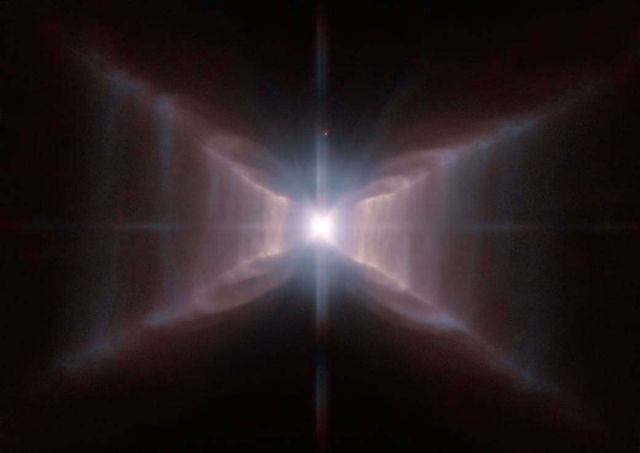Hubble Space Telescope frames the unique star HD 44179, surrounded by an extraordinary structure known as the Red Rectangle.
It acquired its moniker because of its shape and its apparent color when seen in early images from Earth. This strikingly detailed Hubble image reveals how, when seen from space, the nebula, rather than being rectangular, is shaped like an X with additional complex structures of spaced lines of glowing gas, a little like the rungs of a ladder.
The star at the center is similar to the sun, but at the end of its lifetime, pumping out gas and other material to make the nebula, and giving it the distinctive shape. It also appears that the star is a close binary that is surrounded by a dense area of dust — both of which may help to explain the very curious shape.
The Red Rectangle is an unusual example of what is known as a proto-planetary nebula. These are old stars, on their way to becoming planetary nebulae. Once the expulsion of mass is complete a very hot white dwarf star will remain and its brilliant ultraviolet radiation will cause the surrounding gas to glow. The Red Rectangle is found about 2,300 light-years away in the constellation Monoceros (the Unicorn).
Text credit: European Space Agency
Image credit: ESA/Hubble and NASA
source NASA






Leave A Comment